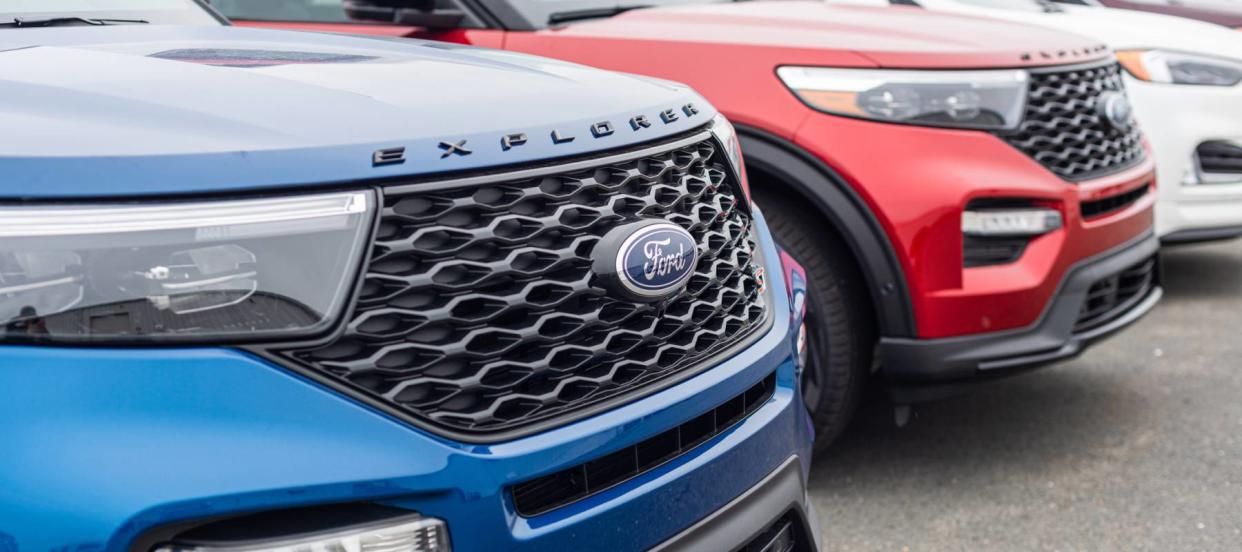This 36-year-old is paying off a $66K loan on a $49K Ford Explorer after a trade-in — Americans are getting run over with negative equity due to long-term car loans and high interest rates

Stories of shady deals on used car lots are legion. But then there’s the recent tale of Atlanta-area data engineer Chris Martin, who traded in his family’s two cars for a Ford Explorer. That revised Ford’s $49,000 price tag to … an even swap? $10,000? $22,000?
How about $66,000?
Don’t miss
Take control of your finances in 2024: 5 money moves to start the new year off strong
Robert Kiyosaki warns: ‘Cash is trash’ — Discover the power of diversifying with gold now
She bought an ‘unlivable’ house for $16,500 and made it her dream home — but you can reap the rewards of today’s expensive housing market without all the heavy lifting
Though that might sound like inflated, fuzzy math leaching from a con man’s pen, a recent Bloomberg story puts purchases like this one in stark perspective. At a time of high auto loan rates and soaring car prices, they’ve become more common because of a phenomenon known as negative equity.
Though Martin saw the deal as a necessity with a fourth child on the way (the Explorer has three rows of seats), he told Bloomberg that he felt uneasy about his decision: “I don’t want to be paying interest on cars that I don’t even have anymore.”
He’s not alone. Many car owners today owe more on their cars than what they paid for them: a situation similar to being underwater on a mortgage. Here’s what’s behind the phenomenon and what you can do to keep from getting run over (financially) by your own vehicle.
Negative equity and today’s auto market
Remember not all that long ago when you could snag a car loan for 4%? Or even 5%? If you’re waiting for those rates to return, please keep in mind the dangers of daydreaming at the wheel.
As of the last quarter of 2023, the interest rate for a 60-month new car loan from a commercial bank clocked in at 8.15%, according to the Federal Reserve. That’s the highest rate the Fed has recorded since at least 2006, and may explain why people are opting for even longer loans — which, though the rates are higher, often come with lower monthly payments. At 72 months, the new car loan interest rate was at 8.67% in Q4 2023, the Fed reports. (These numbers are simple unweighted averages of each banks’ most common rate.)
So if you finance a car but only make minimum monthly payments, you could soon find yourself dog paddling to keep up with interest charges. Or, not keep up. Remember that few high-ticket items depreciate in value as quickly as a car. While there's no predetermined rate for this, the insurer Progressive estimates that many new cars may lose up to 20% of their value the first year and an additional 15% more annually until the four- or five-year mark.
Read more: Retire richer — why people who work with a financial advisor retire with an extra $1.3 million
And as of December 2023, the average price for a new car was $48,759, according to data from Kelley Blue Book. Assuming a depreciation of 20%, that car will lose close to $10,000 value even if it sits in your driveway for a year, doing nothing.
Hitting the brakes on that underwater car
It’s one thing to look at this vicious cycle of sinking debt as inevitable. In truth, many American consumers could save tens of thousands of dollars, numerous credit score dings and untold hours of stress simply by taking a “needs vs. wants” reality check.
There’s a reason the phrase “new car smell” has entered the cultural lexicon. It’s an alluring, even addictive prospect, to purchase a new or gently used vehicle. The market knows this. Car sales teams also know how tired you are of looking at your dud’s dented side panels day after day.
But falling in love with a car — any car — before going over your numbers from top to bottom first means you’ve turned a rational financial decision into an emotional one. Once you get a firm grasp on your budget, you may find you’re much better off holding on to your used vehicle, opting for public transit, tuning up your bike and/or opting for rideshare.
Otherwise, you could find yourself driving in circles – even if it’s in style – on the way to the poorhouse.
Bloomberg quotes Ivan Drury, director of insights at auto-market researcher Edmunds: “Unless American car shoppers break their habit of buying again too soon, we’ll see the negative equity tide continue to rise.”
What to read next
Thanks to Jeff Bezos, you can now cash in on prime real estate — without the headache of being a landlord. Here's how
Find out how to save up to $820 annually on car insurance and get the best rates possible
Millions of Americans are in massive debt in the face of rising rates. Here's how to take a break from debt this month
This article provides information only and should not be construed as advice. It is provided without warranty of any kind.
